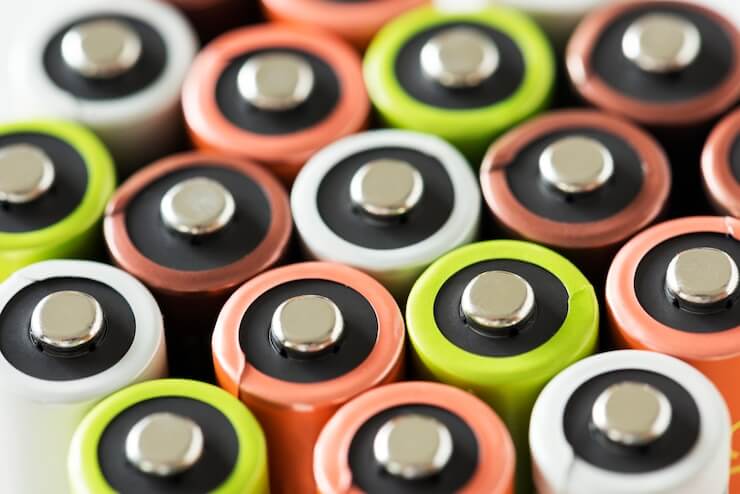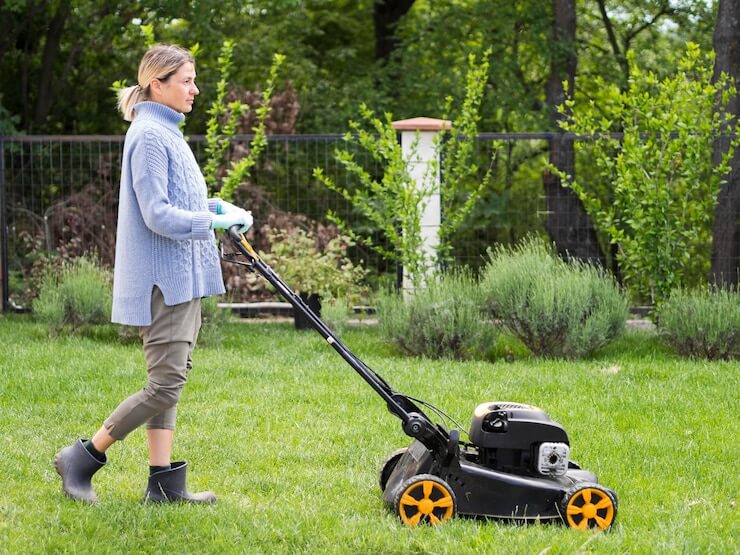In today’s modern homes, Lithium batteries power everything from cordless vacuum cleaners to e-bikes, e-scooters, power tools, and even kids’ toys. They offer reliable energy, high performance, and lightweight convenience. But when it comes to replacing these batteries, most users are left scratching their heads. That’s because there’s no standardisation across devices—meaning each one uses a battery with a unique size, voltage, and amperage.
This lack of uniformity not only confuses users but also creates complications when trying to find suitable or safe replacements. In this blog, we explore why this issue exists, how it affects consumers, and why genuine batteries perform better than aftermarket ones.
Why Lithium Batteries Are So Popular?
Lithium-ion batteries have become the go-to power source for household and personal mobility devices, including:
- Cordless vacuum cleaners
- E-bikes and e-scooters
- Cordless power tools
- Robotic vacuums and lawn mowers
- Portable fans and electronics
These batteries are chosen because they offer:
- High energy density
- Lightweight design
- Faster charging capabilities
- Longer overall life than older different types of batteries (like nickel-cadmium)
But despite their advantages, lithium batteries present one key issue: inconsistency across brands and models.
No Standard Battery Size, Voltage, or Amperage
One of the biggest frustrations when it comes to lithium batteries is that there is no one-size-fits-all solution. Unlike older devices that might have used standard battery sizes (like C or D cells), modern lithium-powered devices each have custom battery packs.
Here’s a breakdown of the variations:
🔋 Battery Size
Each device has a battery shaped and sized specifically to fit its internal design. For example:
- A cordless vacuum might use a slim rectangular battery pack that slides into the handle.
- An e-bike battery may be mounted on the frame, shaped like a long tube or block.
- E-scooter batteries are often embedded in the deck, requiring flat, modular packs.
Because of this, battery replacement must match precise physical dimensions, otherwise they simply won’t fit.
⚡ Voltage Differences
Voltage affects the amount of power a battery can deliver at once. Different devices demand different voltages. Some common examples include:
- Cordless vacuums: 14.4V to 25.2V
- E-bikes: 24V, 36V, 48V, or 52V
- E-scooters: 24V to 48V
- Power tools: 12V, 18V, 20V
Using the wrong voltage can permanently damage a device or pose safety risks. That’s why voltage compatibility is critical when sourcing a replacement.
🔌 Amperage or Capacity (Ah)
Amperage, or more accurately amp-hours (Ah), determines how long a battery will run before needing a recharge. Higher Ah means longer use per charge.
Examples of capacity differences:
- Vacuum batteries: 2.0Ah to 4.0Ah
- E-bike batteries: 8Ah to 20Ah
- Power tools: 1.5Ah to 6.0Ah
Even when voltage is correct, using a battery with the wrong amperage can affect run time and cause strain on the motor.
Read more: What You Need To Know About Lithium Batteries?
Why Brands Don’t Use Standardised Batteries?
You might be wondering why manufacturers don’t agree on a universal battery type. The main reasons are:
- Product Design Needs: Different devices have different form factors and power requirements.
- Brand Lock-in: Custom batteries ensure that consumers must return to the brand for replacements.
- Safety & Efficiency: Some manufacturers claim proprietary battery shapes or systems optimise safety and performance.
- Technology Evolution: As battery tech improves, designs evolve quickly, making it hard to settle on a single standard.
Common Devices, Completely Different Batteries
To show just how varied lithium battery systems are, here are some real-world comparisons:
🔌 Cordless Vacuum Cleaners
- Dyson V11: 25.2V, 3600mAh (3.6Ah), proprietary shape with specific release latch.
- Shark Cordless: 21.6V, 2.0Ah, rectangular modular battery.
- Hoover Blade+: 22V, 2.5Ah, detachable with slide-lock fitting.
🛵 E-Scooters
- Xiaomi Mi Electric Scooter: 36V, 7.8Ah, integrated pack.
- Segway Ninebot: 36V, 10.2Ah, removable cylindrical battery.
- Unagi Model One: 33.6V, 9.0Ah, dual-motor compatible battery.
🚴 E-Bikes
- Merida eSPRESSO: 36V, 11.6Ah
- Giant Explore E+: 36V, 13.8Ah
- Leitner Venice Cruiser: 48V, 10Ah
Each one has different charging ports, mounting hardware, and protection circuitry—making cross-compatibility impossible.
The Truth About Aftermarket Lithium Batteries
When a genuine battery is either too expensive or unavailable, many consumers turn to aftermarket (third-party) replacements. These are often advertised online at lower prices and claim to be “compatible” with your device.
But here’s what you need to know:
1. Shorter Lifespan
While aftermarket batteries may work initially, they usually don’t have the same quality cells or battery management systems (BMS) as the original. As a result, their lifespan tends to be significantly shorter.
2. Lower Performance
You might notice reduced runtime, slower charging, or even devices shutting off unexpectedly. This is often because the replacement battery can’t maintain a consistent voltage under load.
3. Safety Concerns
Some third-party batteries lack proper thermal protection, short-circuit prevention, or overcharge cut-offs. This can lead to overheating, swelling, or even fire.
4. No Warranty Coverage
Many manufacturers state that using third-party batteries will void your warranty, leaving you with no recourse if things go wrong.
What Can Be Done?
At the moment, the only solution is to be cautious, informed, and always verify the specifications before purchasing a replacement. Here are some helpful tips:
✔️ Always Check the Specs
Double-check the voltage (V), amperage (Ah), and connector compatibility. A battery with the wrong voltage can damage your device or underperform.
✔️ Stick with Genuine Where Possible
Yes, genuine batteries cost more, but they’re engineered to work perfectly with your device. They also offer greater safety, longer battery life, and better overall performance.
✔️ Don’t Mix and Match
Never try to force a battery from one device into another, even if it looks similar. The internal electronics, voltage requirements, and cell configuration may be different.
✔️ Buy from Trusted Suppliers
Choose reputable suppliers who understand the local safety standards and can offer advice and after-sales support.
Will There Ever Be a Universal Lithium Battery?
While the idea sounds great, it’s unlikely to happen any time soon. Manufacturers continue to innovate and compete to design their own battery systems for competitive and technical reasons, including performance tuning, branding, and cost savings.
Until industry-wide standardisation becomes a reality, the responsibility falls on consumers to understand their devices better and make informed choices.
Final Thoughts
Lithium batteries have changed how we use and power household devices, but the lack of standardisation in size, voltage, and amperage makes replacements difficult and confusing.
If you’re ever unsure about the right battery for your vacuum cleaner, e-bike or power tool, it’s always best to:
- Consult the original manufacturer
- Compare specifications carefully
- Avoid risky aftermarket options
Need help choosing the right battery? At Batteries Sunshine Coast, we specialise in helping Aussies find safe, reliable and fully compatible lithium battery solutions.
FAQs
1. Why do household lithium batteries vary between devices?
Household lithium batteries differ in size, voltage, and amperage because each device is designed with unique power and space requirements. Manufacturers often use custom battery packs to improve performance and prevent compatibility with third-party alternatives.
2. Can I use a battery from one device in another?
No, it’s not recommended. Even if two batteries look similar, using the wrong voltage or amperage can damage your device, reduce performance, or create safety hazards like overheating or fire.
3. Is it safe to use aftermarket lithium batteries?
Aftermarket batteries may be cheaper, but they often have lower-quality cells and lack proper safety systems like thermal protection. This can lead to reduced lifespan, poor performance, or even safety issues. It’s best to use genuine or trusted replacement batteries.
4. How do I find the right replacement lithium battery?
Always check the original battery’s voltage (V), capacity (Ah), and shape/connector type. If you’re unsure, consult your device manual or speak to a trusted supplier like Batteries Sunshine Coast.





